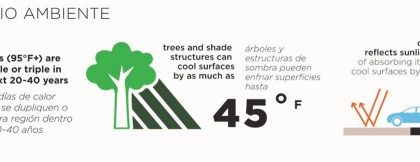
“The City came into being to preserve life, it exists for the good life.” — Aristotle
“Gotta Catch ’Em All” — Proverb
By Michael Sampson and Marc Caswell, Alta Planning + Design
Have you noticed that public plazas and sidewalks have been more busy lately — full of people wandering around looking at their phones (a little more than usual)?
For years, planning and design firms like Alta Planning + Design have worked to encourage people to walk more often, to create public places that attract lively interactions, and to improve communities through education and infrastructure. Companies have written hundreds of ‘Best Practice’ memos and design guidelines on encouraging people to get off their couch and out of their cars. Consulting firms have created apps and websites designed to ‘gamify’ commutes and encourage people to ditch the single-occupancy car for options like walking with some success.
This giant mob of people on the Santa Monica pier all celebrated catching a dragonair. #PokemonGO pic.twitter.com/CsAOS2ag3f
— Travis Gafford (@TravisGafford) July 12, 2016
But, less than 10 days after the launch of Pokémon Go, more than 21 million people have downloaded the app and are walking around cities and congregating in public spaces that were once relatively empty. This is what urban planners have been trying to accomplish for years — and, nearly overnight, it happened. But, it wasn’t any urban planning firm’s doing: it was a spinoff of Google, Niantic, who capitalized on today’s smartphone technology and the nostalgia of 1990’s branding.
So, what does the success of Pokémon Go mean for the field of urban planning?
First, it proves that people can — and will — get out of the house and walk if they have a reason to. It also shows that the concept of gaming has evolved from simply sitting inside in front of a screen for hours to the players enjoying their city, walking many miles in a day. Gizmodo reported a ‘pandemic of sore legs’ as Pokémon Go players ‘accidentally get exercise.’ For those who aren’t familiar with the game, there are even features designed to reward walking: eggs only hatch when you’ve walked an ever-increasing distance (and, yes, the app does not count distances when the user is traveling faster than human power allows).
Second, it reinforces the notion that living in a city is way more fun than suburbia. Urban planners love to talk about density — whether it’s jobs, housing, or commercial locations. The more destinations there are in close proximity, the more likely it is people will walk. This is no different in the virtual world of Pokémon Go: Pokéstops (the places where you gain free Pokéballs so you can catch the Pokémon) were submitted by users over the past 2.5 years — and, unsurprisingly a large amount are in the denser areas of cities. People who live in rural and suburban areas are complaining that these Pokéstops are too far apart in their communities, while urban sidewalks are filled with Pokémon hunters.

The program also uses a simplified map of your surroundings with the actual street grid, but no street names, businesses or buildings. While apps like Waze and Google Maps have made people accustomed to seeing navigation maps designed for high speed automotive travel, this app brings the scale of the maps to a more walkable, neighborhood perspective. The game also limits the ability to play while driving, since players are required to remain within a small area around a Pokéstop or Pokégym. In short, Pokémon Go is helping people see and experience their cities from the human scale and speed. Because of this newfound interest in walking, some residents in the suburbs are noticing for the first time that their community wasn’t built for walking. Perhaps it’s time we start thinking about “Safe Routes to Pokémon.”
Yep. Seems *exactly* the right spot for a Poke Stop. Lemme just cross the highway w no sidewalk first. #PokemonGO pic.twitter.com/5XOWAAQI6m
— Sarah Fogle | Ugly Duckling House (@uglyducklingDIY) July 12, 2016
Third, Pokémon Go may help return parks to a central aspect of public life by adding additional programming — at no cost to cities or agencies. Many parks have become hotspots for playing Pokémon, where players gather to catch Pokémon. In “Death and Life of Great American Cities,” seminal urban planner Jane Jacobs lamented the ‘volatility’ of public parks — and that public spaces are only successful when they attract diverse range of users and activities. In addition to parks, players are gathering around coffee shops and community centers designated as Pokéstops and Pokégyms. The game has caused a noticeable increase in public use in some areas. Simply, Pokémon Go has used its virtual world to accomplish the goal of every Urban Planner by ‘Placemaking’ thousands of locations across the world.
Lastly, Pokémon Go has been embraced by small businesses who see the benefit of increased foot traffic. Some businesses are using virtual lures (for Pokémon) to lure real-life customers. Communities thrive when people step out of their house and onto the sidewalks interacting with neighbors and local business owners. Without a doubt, Pokémon Go has reinvigorated public spaces and brought life to Main Streets across the country — all fundamental components of creating healthy, active communities.

Authors Michael Sampson (Level 19 PokéMaster) and Marc Caswell (Level 6 PokéProspect) are senior staff at Alta Planning + Design, Los Angeles. For more information on Alta’s work in planning, active transportation, Complete Streets, and placemaking visit www.altago.com.


